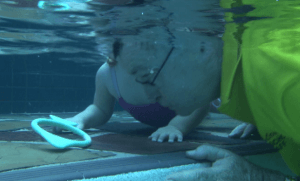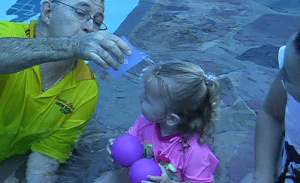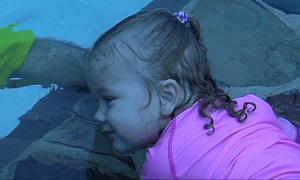Once children become 2 years of age and above they need to participate voluntarily in breath control activities. They can follow instructions and therefore can be encouraged to put their faces under the water. The objective is to teach children to hold their breath. Therefore children should not be encouraged to blow bubbles.
Parents should utilise the below activities in the daily bath time routine. This will enable children to master breath control quickly and transition easily into swimming lessons.
Using demonstrations will be extremely beneficial. Once the child observes that the parent or teacher is happy to submerge the face, they are more likely to be happy with breath control exercise.
A child’s head must never be forced underwater.
Forcing or holding a child’s head underwater will frighten the child and be detrimental to the learn-to-swim process.
Using a cup to pour water over the face is a great way to start. However some children will resist this exercise. Parents should not force the issue but try to find fun ways to encourage this exercise. Children will likely enjoy pouring the water over their parents face. So the game can be a pour for “mummy” and a pour for “Leila”.
Getting children to hold toys while pouring water over the face can be a good distraction. Holding toys in two hands makes it difficult for children to wipe their eyes. Rubbing the eyes will make them sore and children will become unwilling to participate. Use endless positive praise to let the timid child know how well they are doing.
To keep children interested and happy with breath control activities find ways to break up the routine. Ask children to put their ear or nose underwater. By building skills we make the child more likely to oblige when we ask them to submerge their entire face. Setting children up for success is important for their self esteem when learning.
Getting children to look at coloured fish or toys under the water is great to encourage children to perform independent head submersions. Here we can encourage them to open their eyes and see what’s underwater.
Getting to know what it’s like underwater without goggles is important. It becomes a safety concern if children become reliant on their goggles. If the child falls in the pool without goggles they may begin to panic. Therefore do not use goggles with children until they are comfortable without them. Importantly, once you introduce goggles it is important to continually revise swimming without them.



